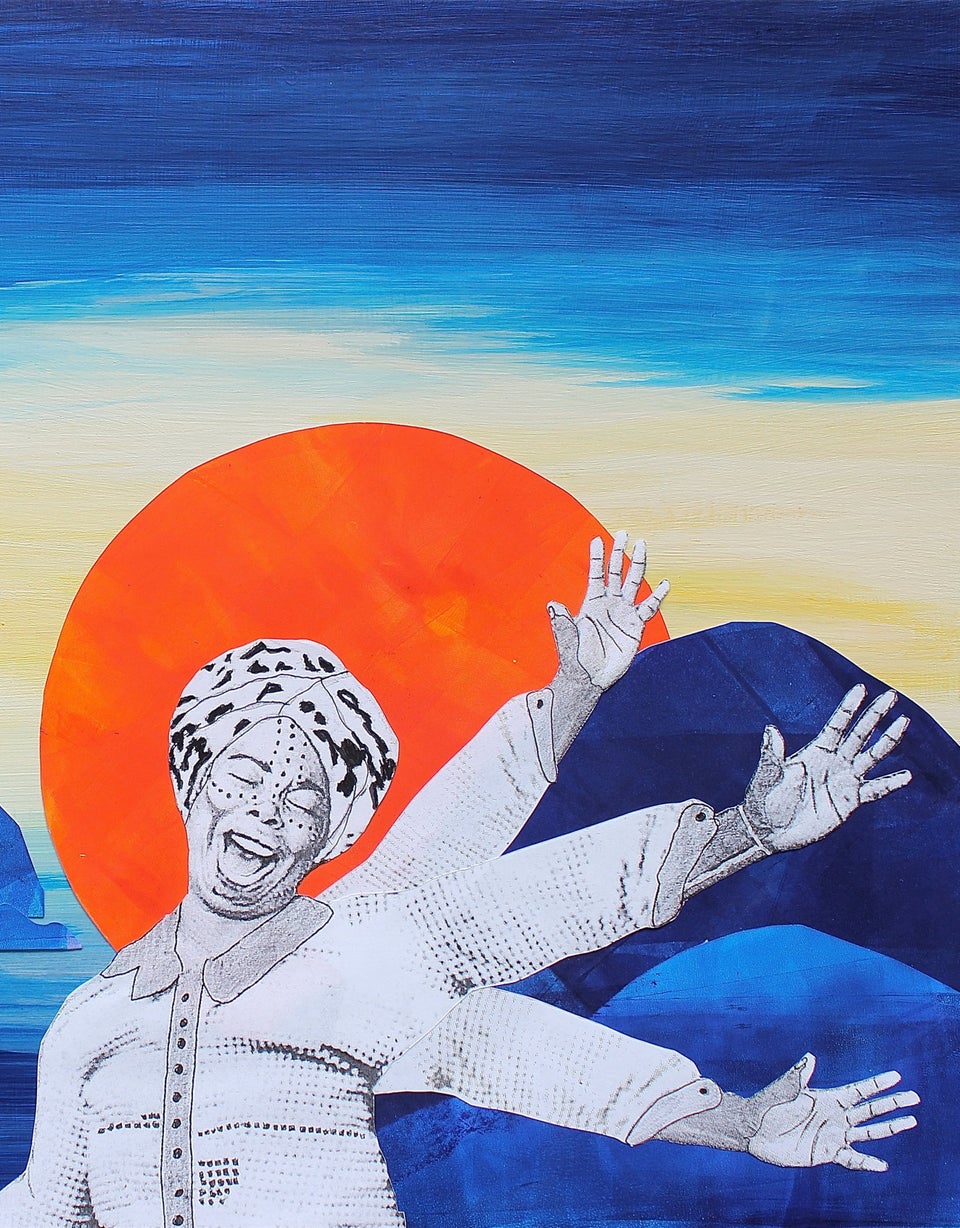Warning: This article contains nudity and may not be appropriate for work.
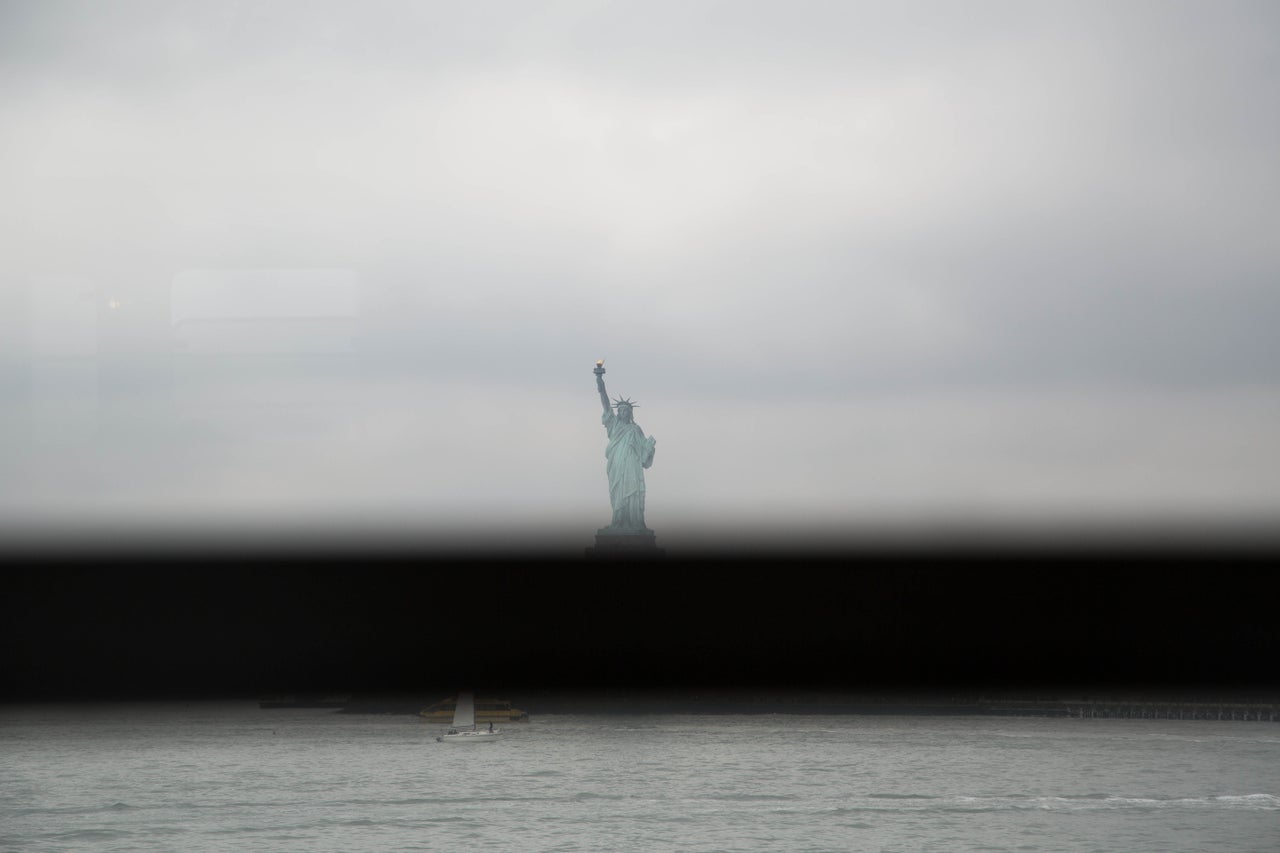
Photographer Nona Faustine was riding the Staten Island Ferry in April of 2016 when she decided to take a picture of the Statue of Liberty.
When she peered through her camera’s lens, Faustine was taken aback by a thick, black streak bifurcating the frame. A bar on the ferry’s window cut through her view, obstructing the scenery and overlaying the iconic American symbol with a dark stain. The artist was convinced its imposition wasn’t wholly accidental.
“It was haunting,” Faustine explained in an interview with The Huffington Post. “To me, it felt like a premonition.” She snapped the image ― ghostly slash included.
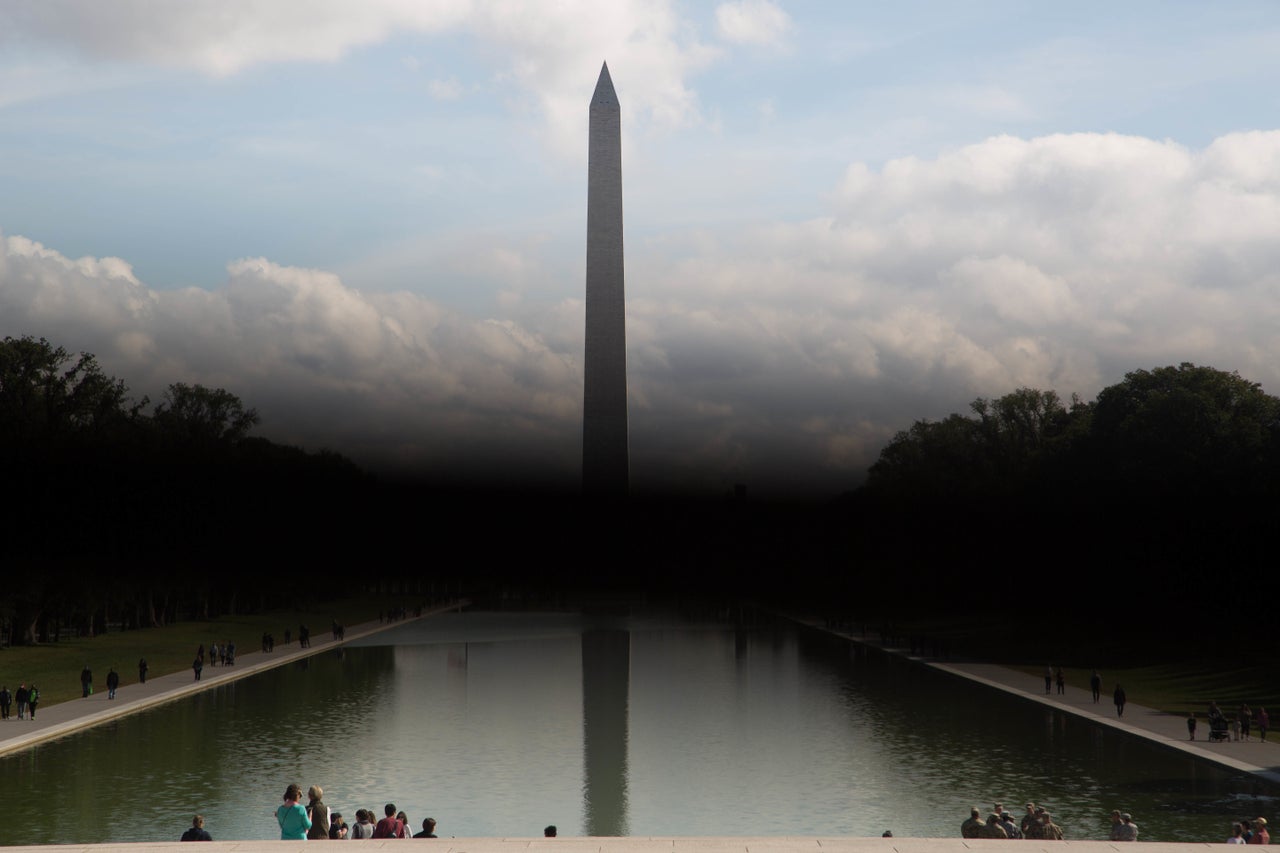
This photograph would become the first of Faustine’s newest series “My Country,” a muddled tour through America’s most iconic monuments. In it, she opts out of the visual language commonly used to document America’s historical shrines ― one that is awe-struck and reverent, the stuff of postcards and posters. Instead, Faustine captures the monuments as they feel in this current political climate ― uncertain, hazy, fragile, drifting away.
The photos simultaneously celebrate and question our stupendous, American monuments, probing viewers to imagine the sacrifices made for their existence. Faustine photographed Lady Liberty during the messy 2016 presidential campaign, when the election of Donald Trump seemed, for many, like an unlikely and ghastly nightmare. Now that he’s been elected, the black bar seems even more menacing.
“We’re losing something,” Faustine expressed. “The ideals of that statue, what she represents, are disappearing. The blackness of the window cutting across the pedestal was like an erasure. It reminded me, also, of African-American history.”
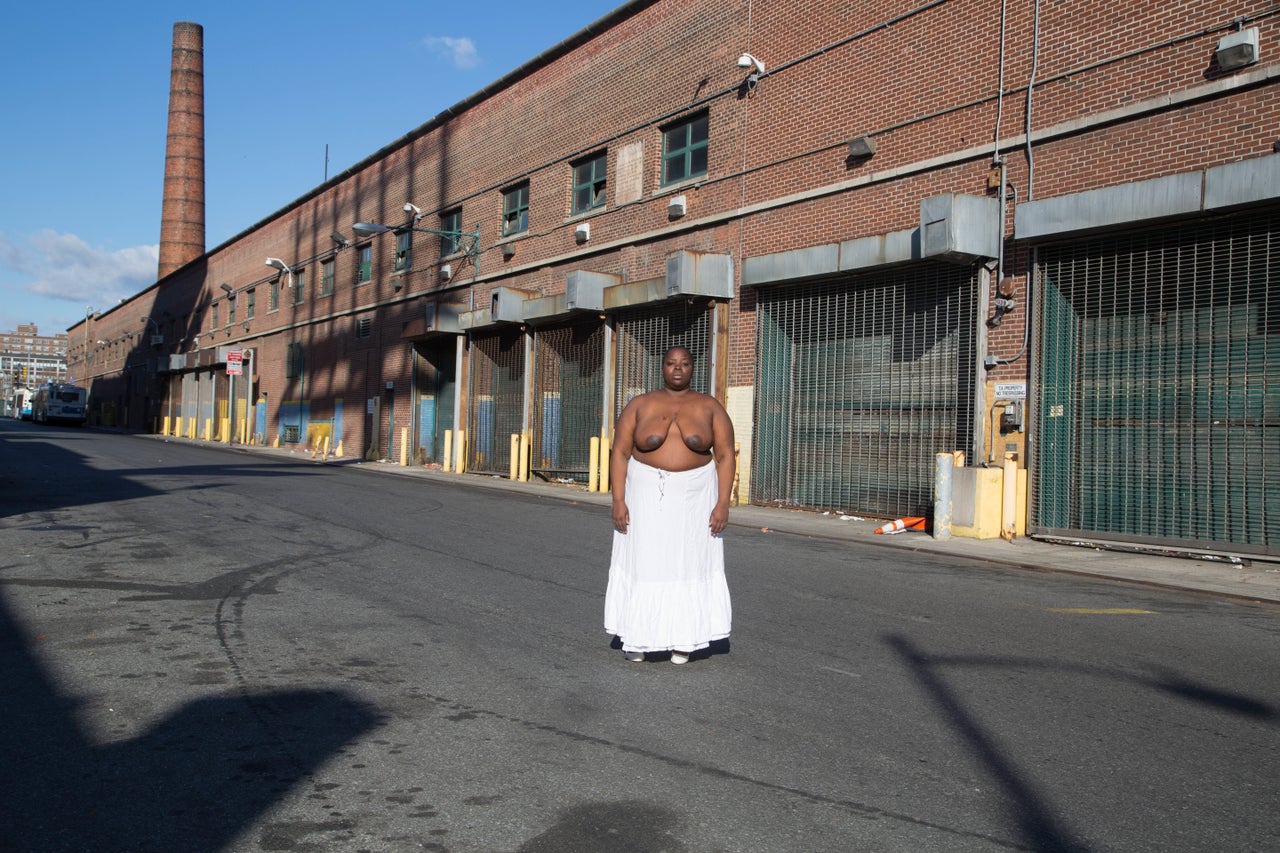
Faustine has long been interested in America’s selective manner of history-making, using her camera to explore the spaces where a residue of stories unseen and untold nonetheless bubble up to the surface. Often, such stories revolve around African-American lives.
In her 2015 series “White Shoes,” Faustine revisited places around New York where slavery once boomed ― spaces like City Hall, Wall Street, and the Supreme Court, that seem to have acquired an architectural amnesia, the facades never hinting at their former roles in oppression. Wearing only a pair of white, high-heeled shoes, Faustine revisited the inconspicuous New York sites and posed proudly as a black woman, allowing the present to confront the past.
There is a visceral punch to Faustine’s images, which radiates from the pure gall it takes to pose naked in the middle of one of the biggest cities on Earth. And yet their impact probes deeper. Amid New York destinations that serve as economic nuclei or government hubs ― often associated with schools of white men in suits ― Faustine’s naked black female body stands out like a phantom presence. In a way, that’s exactly what she is.
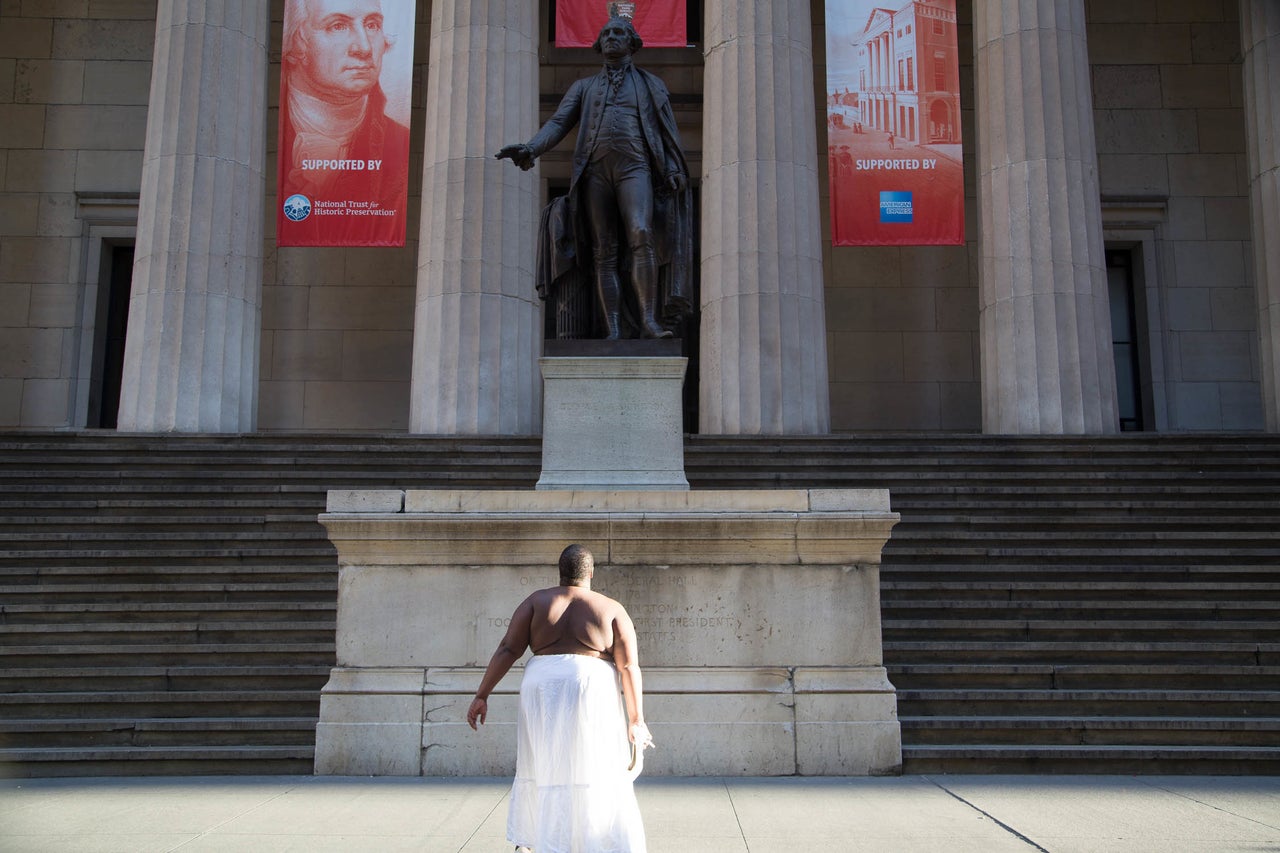
“Ours is a haunted, incomplete history, one that contradicts what we are taught about this country and its people,” Faustine said in a 2015 interview. “We must acknowledge and pay tribute to those that founded and built this country. Not just some of them, but all of them. Like the thousands of Africans buried under lower Manhattan, there are others in long forgotten places.”
Faustine is still adding to the “White Shoes” series, changing her photographic formula slightly as the project continues to evolve. In her newer images, the artist is partially clothed in a flowing, white skirt, emphasizing the projects’ bygone feel.
With her newer photos, Faustine visits sites with violent histories outside the narrative of slavery. For example. she visits Brooklyn’s Borough Hall, once serving as home to the indigenous Lenape population. Faustine manifests at the modern-day shopping mall like a spectral conscience, speaking not just for her own ancestors but for all people denied the rights and freedoms of white Americans.
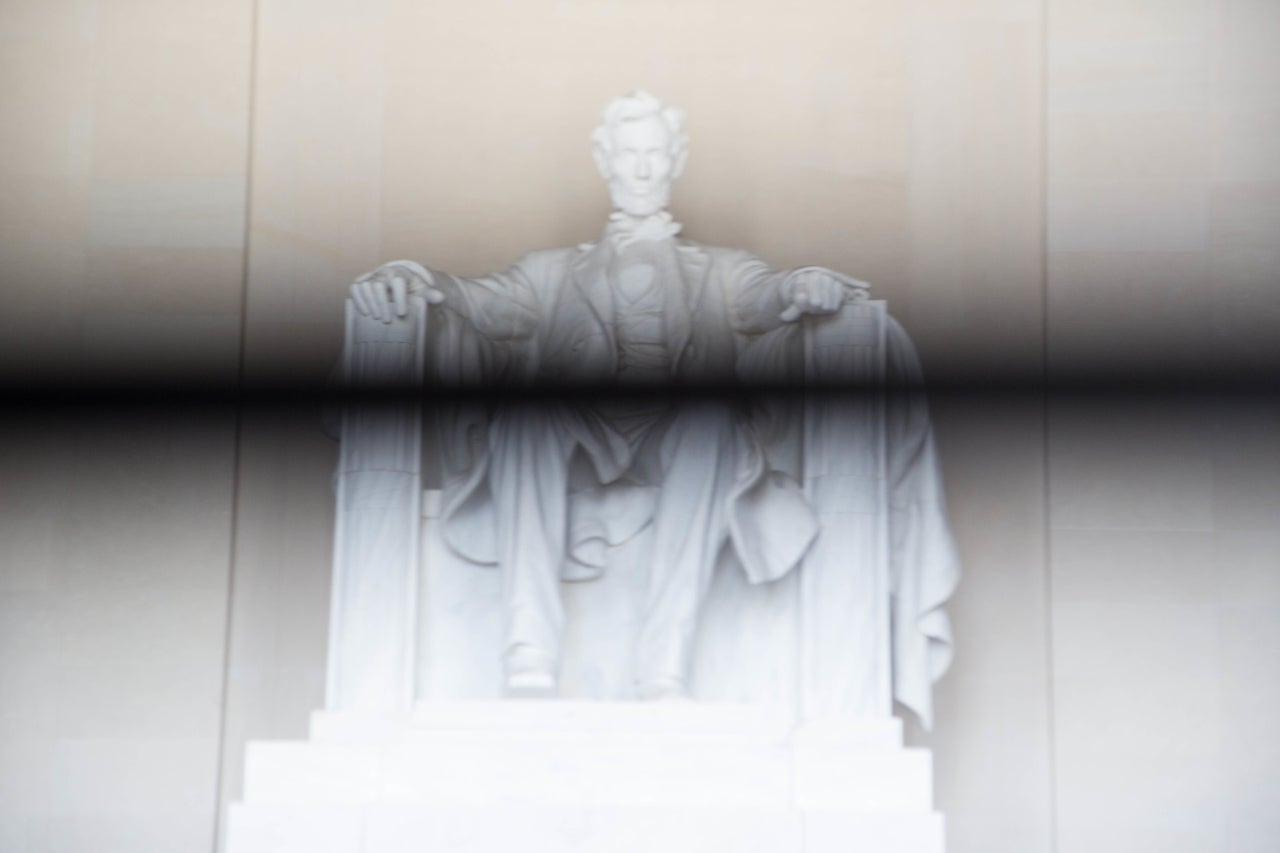
With “My Country,” Faustine continues her role as documentary historian with an eye for apparitions and premonitions. After encountering the organic obstruction jutting into her view of the Statue of Liberty, the artist then recreated a similar dark streak in her photographs of the Washington Memorial and Jefferson Memorial by placing tape over the lens.
With these works, Faustine was interested in George Washington and Thomas Jefferson as American heroes, whose legacies are enshrined in the utmost reverence, despite the fact that both men owned slaves. “Whose history is preserved and whose is not?” Faustine asked.
The black line, then, pierces the mythology, while gesturing toward the countless enslaved people who lived and died in this country without recognition, who built its cities without compensation, who served in the Revolutionary War, whose burial sites were covered up by bus depots and highways. Histories that were so cruelly and haphazardly erased.
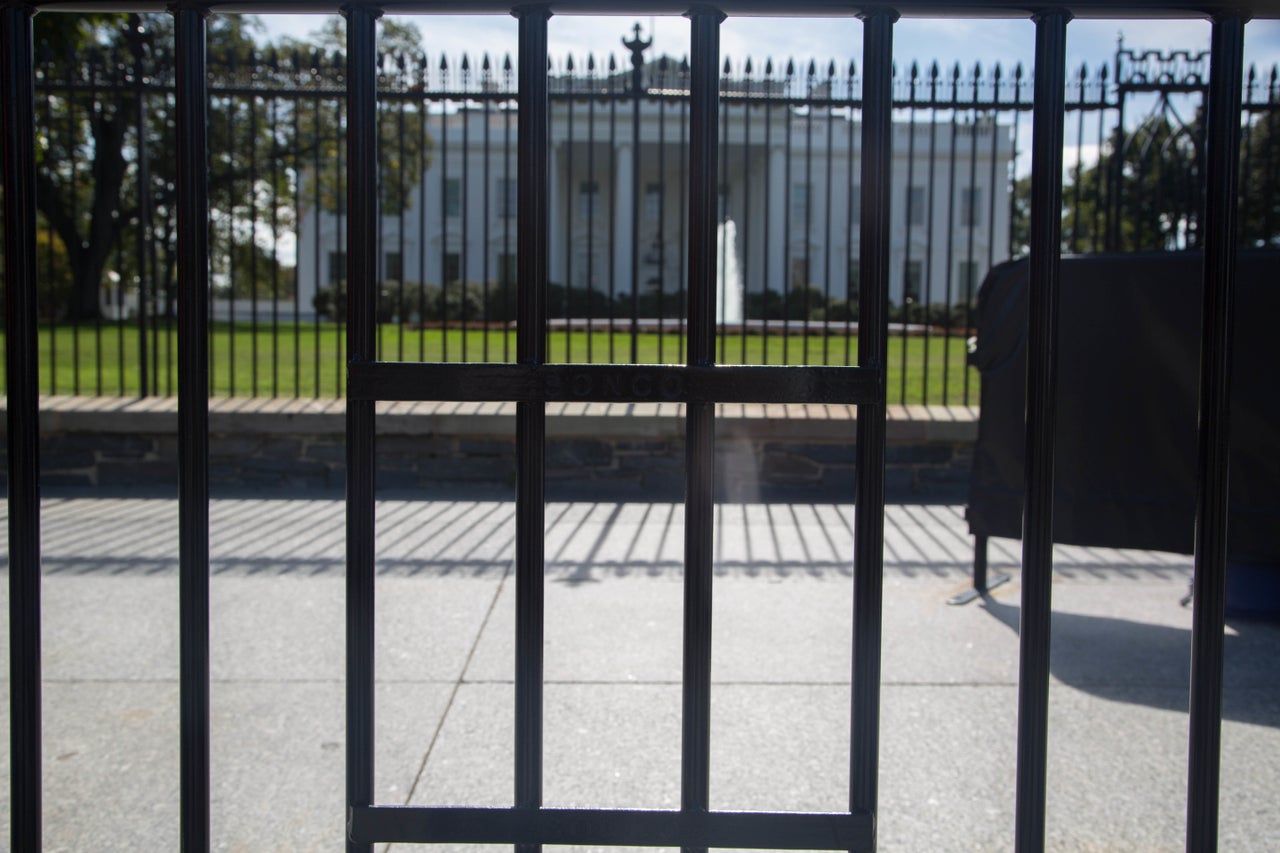
A particularly gripping piece in the “My Country” series depicts the White House as it appears to tourists and passersby, blocked off by rows of gates and armed guards. Originally, Faustine explained, she felt compelled just to see the White House in person before President Obama left office. The real-life barriers she found there mirrored, the artist explained, “all the stagnations and obstructions to democratic ideals we experience in real life.”
Faustine doesn’t believe in accidents. For the artist, every gate, every cloud, every window bar is a sign, communicating some conceptual message. Her photos, then, begin to feel almost supernatural, in their ability to capture a space’s unseen history, present energies, and futuristic intuitions all at once.
Faustine cannot say she predicted Trump’s election, yet she admits in no uncertain terms the signs were there. While visiting the Washington Monument, for example, she recalled seeing huge clouds that felt somewhat apocalyptic. “I look for signs in the land, and that, seeing those clouds, to me was a premonition,” she said.
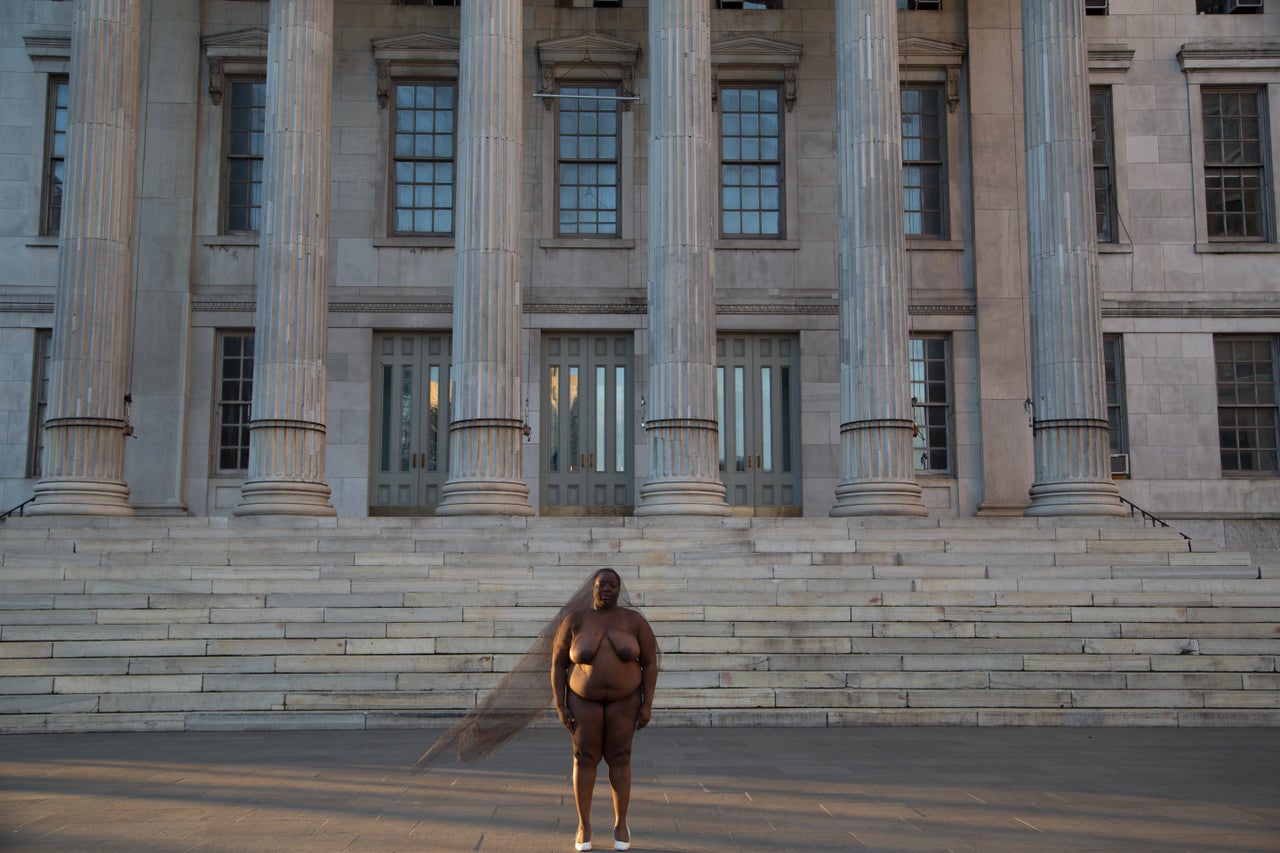
Now that the election has come to a close, the photographer is more steadfast than ever about her role as an artist. “I feel strongly that artists are the conscience of our country and our society,” she said. “Artists are here to fight for freedoms. I initially was a little fearful, but I knew I would take that fear and I would use it.”
This too, is the sentiment behind the series title, “My Country.” Imbued with a hint of somber irony, the statement nonetheless proclaims that, despite historic and systematic attempts to oppress marginalized peoples and push said injustices out of history books and memories, this country is Faustine’s home, in all its beauty, glory and darkness.
As the artist explained in an essay published on The Fader: “I feel like when I say ‘my country’ — which is the title of the show — it’s an affirmation. It’s this kind of in-your-face statement to people who would deny us the right of citizenship or often told us to go back to Africa, but it’s also a mantra to carry inside yourself. I belong. This is mine. I earned it.”
